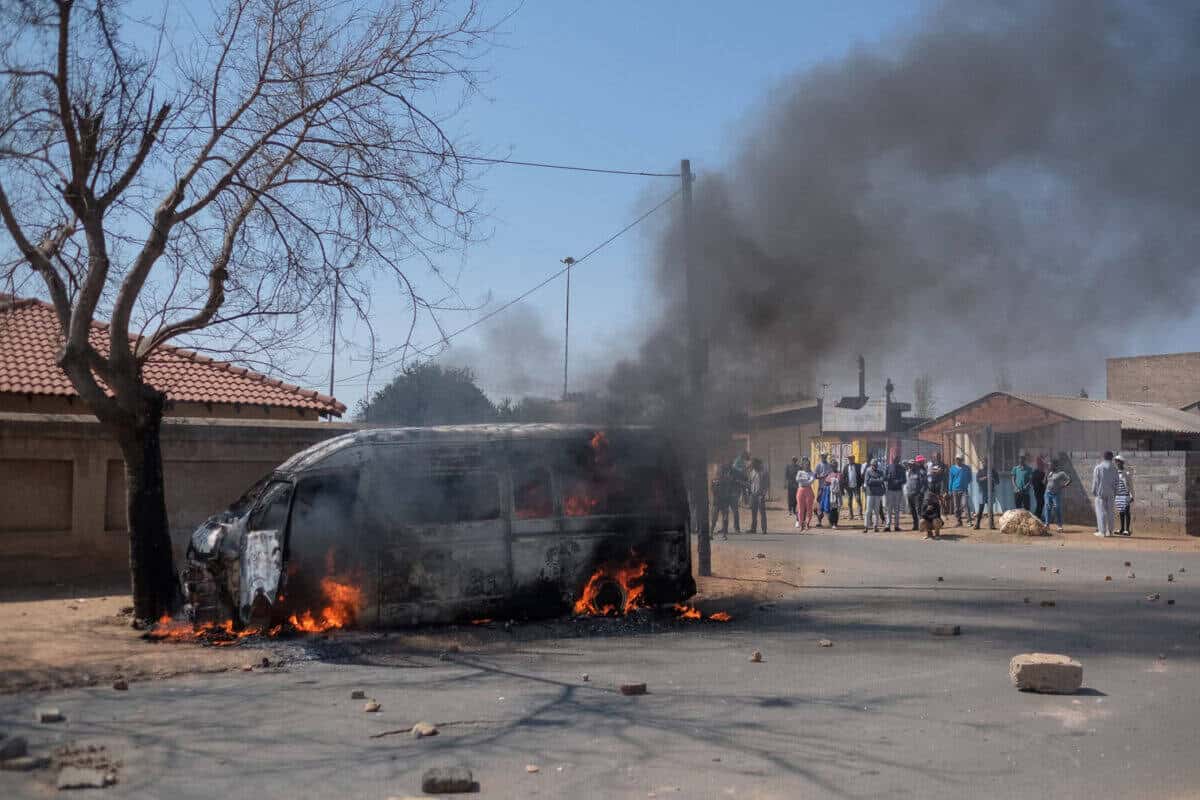South Africa’s transport sector’s war is killing the innocent – and the state is watching.

On Wednesday night, Mthokozisi Mvelase was shot dead and his vehicle was set alight at Maponya Mall in Soweto.
He had been in Johannesburg for two weeks and an Uber driver for just three days when his life was gruesomely ended.
The next day, a minibus taxi was set alight in what was clearly the Soweto community’s angry response to the killing of the Uber driver.
This incident encapsulates South Africa’s current social and economic state: youth unemployment, taxi industry lawlessness, mafia tactics in the transport sector, police inertia and the government’s lack of urgency in addressing citizens’ safety and transport concerns.
In the background, President Cyril Ramaphosa’s government and former president Thabo Mbeki’s foundation were at odds over the National Dialogue that the president insisted was starting on Friday at the University of South Africa in Pretoria.
The already fragile national convention did start with the government’s side of the invitees turning up.
However, the community of Soweto continued protesting in the streets, burning tyres and blockading Chris Hani Baragwanath Road all the way up to the N1.
ALSO READ: ‘Minister, please step in’: Turf war between taxis and e-hailers as mall shuts down and taxi burns
The battle between the South African National Taxi Council-affiliated minibus taxis and the e-hailing industry is as old as the e-hailing industry itself in South Africa.
The arrival of Uber was met with violent opposition by the now almost-defunct metered-taxi industry.
Gruesome deaths and injuries became common occurrences and when the generally feared minibus taxi bodies joined the metered taxi industry, it became a one-sided bullying parade in which the e-hailing drivers were sitting ducks.
Throughout the many years of violence since Uber first entered the South African market in 2013, the government has acted as it always has: a disinterested middleman who looked away even when the bully killed their victim.
It got so bad that it is alleged that taxi patrol vehicles would stop cars they suspected to be e-hailing cars and ask the driver – a man – to kiss a suspected passenger – a woman – to prove that the car was transporting family and not operating as an e-hailing service.
Government intervention remained minimal and ineffective. While former president Jacob Zuma’s government responded too slowly in enacting laws to govern the arrival of e-hailing in the transport sector, the ANC gave up on ensuring that the neglected minibus taxi industry was regularised after it came into power.
ALSO READ: Santaco denies reports of enforcing limits on private vehicle use [VIDEOS]
The industry had been allowed to grow into a huge uncontrolled monstrous law unto itself. The justification was that the government cannot control what they did not build.
And because it would require real effort to bring the industry under government control, it was far too easy and convenient to simply look the other way.
And that is why South Africa is where it is right now. But the community knows how to make the government stop looking away: burn things down and disrupt the rest of the economy that keeps on going while they suffer in a war which is not of their own creation.
When burning tyres block roads, an ambulance fails to get to a dying patient on time, life-saving medication cannot be delivered to clinics, a teacher fails to get to school and workers cannot get to work.
A company in Sandton is less productive because it is understaffed. But, worst of all, the poor get poorer.
It is about time those who only want to talk South Africa’s problems to death gave way to those who want to save Mvelase’s life and livelihood.
NOW READ: Forget Uber and Bolt, we may soon have a Gauteng e-hailing service






